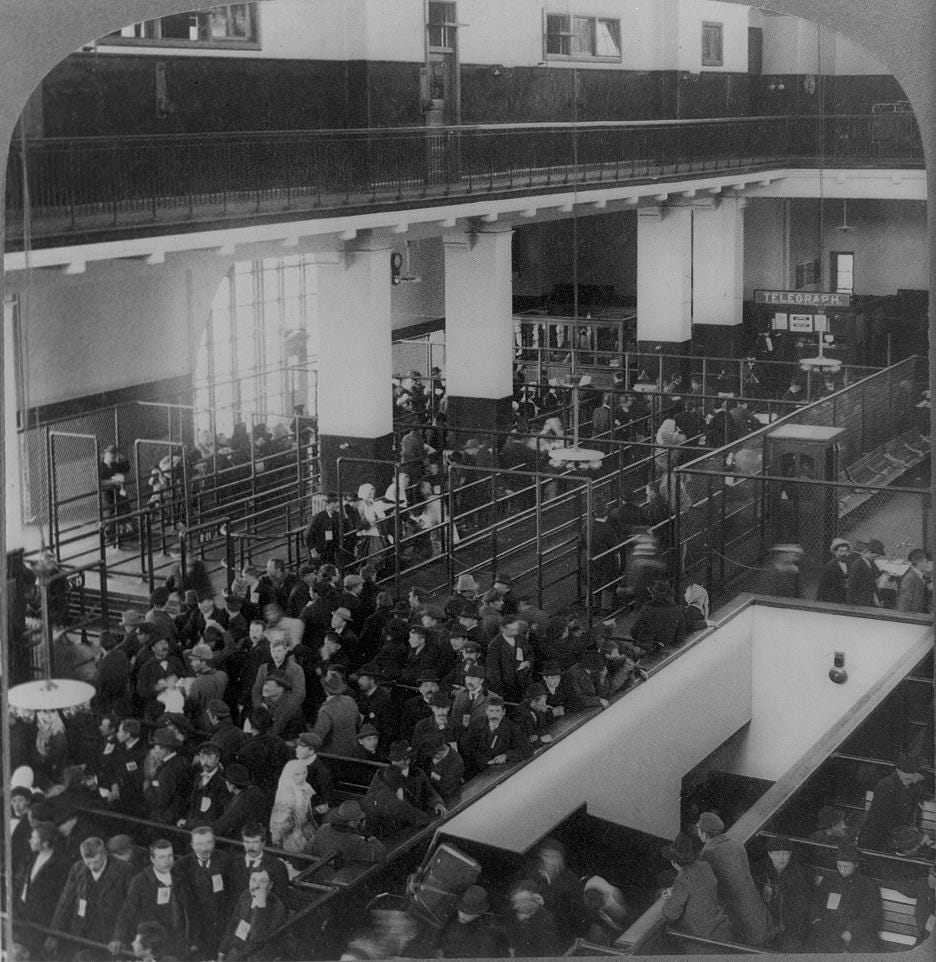Pt 2: From Italy to America: The Fight for a New Beginning
The story of Filomena (Corbo) Frascone (part 2 of 4)
This is the story of the SISTER of my great grandmother — my great, grand Aunt.
If you missed part one, you can read it here.
PART TWO: Filomena has a frightening experience
The newly married Frascone’s sailed from Naples, Italy on the Il Piemonte on February 27, 1906. Luigi held all the money they had in his pocket - $40, keeping it close and safe throughout the 19-day journey to America, arriving in New York on March 18, 1906. The weather was cold and damp, oscillating between snow and rain.
The passage across the ocean was no doubt full of challenges, but for the non-English speaking immigrants, the arrival of their ship in New York was complete chaos. The day after Filomena and Luigi arrived (while the ship’s third class passengers were still in quarantine) there was more than the usual commotion when a woman — perhaps a first or second class shipmate — delivered a baby on the pier!
The next big step was the legally required medical inspections by the United States Public Health Service. “The PHS defined its mission rather narrowly — preventing the entrance of disease to the nation — but their officers interpreted their job more broadly. In their eyes, the goal was to prevent the entrance of undesirable people — those “who would not make good citizens.” In the context of industrial-era America, immigrants who would wear out prematurely, requiring care and maintenance rather than supplying manpower, would not make “good” citizens.”
Needless-to-say, even though forewarned of the medical examination via immigrant aid guides, steamship brochures, etc., the fear of rejection was high. 80-85% of immigrants passed the initial inspections for which the protocol was primarily the physician’s gaze, evaluating for wheezing, coughing, shuffling, limping as well as scalp or nail fungus, tuberculosis, insanity, epilepsy, and mental impairments. The disease most feared was trachoma, a highly contagious eye infection that could lead to blindness and death. If something irregular was observed, a chalk mark would have been placed on the immigrants lapel. Filomena received a chalk mark.

It’s unlikely Filomena understood the specifics of what was happening — just that she was being pulled aside and separated from her husband. The no doubt highly intimidating process of being marked, separated and escorted to a cage-like area for further inspection must have been completely overwhelming.
In her follow-up examination, the doctor noted some type of “cyst or polyp” on Filomena. Fortunately, this would not demand a deportation. She was ready to take the journey to Minnesota!






Story has me hooked.